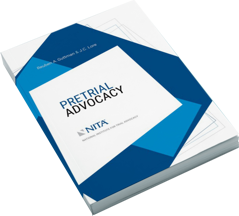Over $40 billion has been recovered through whistleblower, Qui Tam, and False Claims Act cases. The demand for attorneys fluent in the latest practices, procedures, and case law has never been greater as the federal government’s whistleblower program has recently issued record setting awards. The average award today in a whistleblower settlement is nearly $450k, while many cases have been settled for well into the seven and eight figure range. At the same time, the latest amendments affecting this practice area have generated a need for counsel to handle related litigation, investigations, and compliance. The Rossdale faculty for the seminar features a national authority on the topic, who will describe successful strategies for the plaintiff’s and defense bar, recent incentive programs, collecting information in a digital age, settlement incentives, post-settlement obligations, and ethical considerations. Registration includes online access to course and reference materials that serve as a helpful guide to the numerous topics and techniques discussed in the program.
Agenda:
Profiting from Whistleblower, Qui Tam, and False Claim Cases CLE:
- Obtaining Fees in Whistleblower, Qui Tam, and False Claim Cases
- Securing Government Incentives
- Handling Compliance & Investigations
- Use of “Purloined” Documents and Self-Help Discovery to Prove Retaliation Claims
- Increased Focus on “Gag Provisions” in Settlement Agreements
- Successfully Litigating False Claim Act Allegations
- Unearthing the Fastest Growing Area of Federal Litigation
- Cutting-edge Strategies in Whistleblower Cases
- Statutory & Decision Update
- Techniques in Drafting and Arguing Pleadings
- Hot Topics from the Plaintiff’s & Defense Bar
Recorded Question and Answer Session
Biography of Seminar Faculty:
Reuben Guttman is a founding member of Guttman, Buschner & Brooks PLLC. His practice involves complex litigation and class actions. He has represented clients in claims brought under the Federal False Claims Act, securities laws, the Price Anderson Act, Department of Energy statutes and regulations, the Worker Adjustment and Retraining Notification Act (WARN), Racketeer Influenced and Corrupt Organizations Act (RICO) and various employment discrimination, labor and environmental statutes. He has also tried and/or litigated claims involving fraud, breach of fiduciary duty, antitrust, business interference and other common law torts. The International Business Times has called Mr. Guttman “one of the world’s most prominent whistleblower attorneys.” He has served as counsel in some of the largest recoveries under the False Claims Act. Mr. Guttman served as lead counsel in a series of cases resulting in the recovery of more than $30 million under the Federal Fair Labor Standards Act. Mr. Guttman is the author and/or editor of numerous articles, book chapters, and technical publications and his commentary has appeared in Market Watch, American Lawyer Media, AOL Government, Accounting Today, and the Jerusalem Post. In addition to his writings, Mr. Guttman has testified before committees of the United States House of Representatives and the United States Senate on the Asbestos Hazard Emergency Response Act (AHERA). In 1992, he advised President-elect Clinton’s transition team on labor policy and worker health and safety regulation. Mr. Guttman earned his law degree at Emory University School of Law, where he has been appointed as a Senior Fellow and Adjunct Professor at the Emory University School of Law Center for Advocacy and Dispute Resolution and has been a Team Leader for the school’s Trial Techniques Program.
To register or to learn more visit Profiting from Whistleblower, Qui Tam, and False Claim Cases CLE — 24/7 On-demand Recording and Complimentary Podcast – The Rossdale Group, LLC – A National Leader in Attorney Education (mcssl.com)
